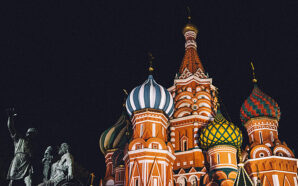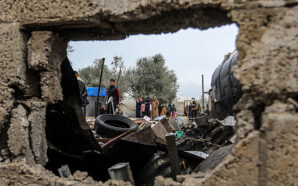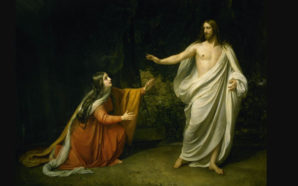The Solemnity of Our Lady, Help of Christians, on Monday 24 May is an important one for the University of Notre Dame Australia. To celebrate, there will be a special Rosary prayed on both our Fremantle and Sydney Campuses on Monday at 10am AWST / 12pm AEST. Below, Notre Dame’s St. John Paul II Chair of Theology, Professor Tracey Rowland, tells us a little about the Feast and its significance.
May 24 is the Feast of Our Lady Help of Christians. This is an important Feast in Australia because Our Lady, under the title “Help of Christians”, is a spiritual Patron of Australia, along with St. Mary of the Cross MacKillop.
The title “Help of Christians” is of very ancient lineage, with Saint John Chrysostom, who died in 407, having used the title in a homily. According to Fr Johann G Roten, the invocation of Mary under the title of Help of Christians is part of the oldest prayer addressed directly to Mary, the Sub tuum praesidium, found on a papyrus dating from the third century. The prayer was initially associated with the Coptic Orthodox Christmas liturgy.
Under this title, the Virgin Mary is also honoured by many Chinese Catholics, particularly at the Shrine of Our Lady Help of Christians of Sheshan, in the Diocese of Shanghai.
The Melbourne-based Classicist, Michael Daniel, summarised the recent history of devotion to the Virgin Mary under this title in the following paragraph:
In 1844, Mary, under the title of Our Lady Help of Christians was chosen as the patroness of Australia at the First Provincial Synod of Sydney. Our Lady has been invoked under the title Auxilium Christianorum or Help of Christians since at least the sixteenth century. After the battle of Lepanto on October 7, 1671, at which a Turkish fleet was feated by a Christian fleet, Pope Pius V, who had previously called upon Catholics to invoke Mary’s assistance so that the Turkish threat may be averted, inserted the title “Help of Christians” into the Litany of Our Lady as he believed that the threat of invasion had been averted through Mary’s intercession. Our Lady was again to be invoked under the title Help of Christians early in the nineteenth century. Pius VII was elected to the Papacy in 1800, soon after Napoleon had seized power in France. Although Pius VII and Napoleon had signed a concordat in 1801, Pius later refused to accede to many of Napoleon’s demands to whittle away the Church’s prerogatives. In a fruitless attempt to coerce Pius VII Napoleon kept him under close arrest in Savona in Italy and other locations from 1809-1814, forbidding cardinals and other Church officials to meet him. A prayer campaign was organised amongst Catholics throughout the world to obtain the Pope’s freedom, particularly the freedom for him to exercise the Petrine office. Pius VII attributed his eventual freedom in 1814 to Our Lady Help of Christians and decreed that the feast be celebrated on the anniversary of the day upon which he re-entered Rome, 24 May.
Most images of Our Lady Help of Christians depict the virgin standing on a globe of the world, holding the child Jesus in one arm and a sceptre in another. Her head is always crowned and the child Jesus in her arms in often crowned as well. In some images, the map of Australia is featured on the globe to signify the Virgin’s special relationship to Australia under this title.
The Sydney-born poet, James McAuley, wrote the hymn “Help of Christians Guard this Land”. It was published in the 1961 Living Parish hymn book and was set to music by Richard Connolly. Australian Catholics who went to school in the 1960s and 70s will be familiar with it. It continues to be used at St. Mary’s Cathedral Sydney for very solemn Masses and is often used in parishes across Australia for Masses said on Australia Day.
Professor Tracey Rowland is the St. John Paul II Chair of Theology at the University of Notre Dame Australia.
With thanks to the University of Notre Dame Australia.








